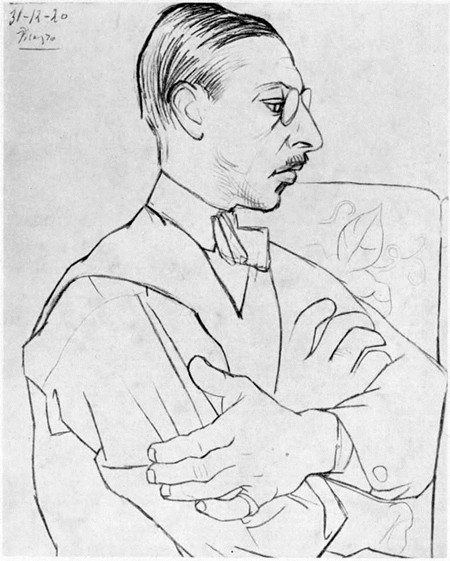
A few nights ago, having nothing much better to do, I started to make a list of classical music inspired by birds. Yes I know, sad but true. Incidentally, if this week’s title has brought unwholesome thoughts into your mind about the denizens of Walking Street, what follows might come as a disappointment because the connections are merely ornithological. Sorry about that, but life can often be full of disappointments.
Anyway, back to the birds. Most classical music doesn’t describe anything at all but some composers, especially those of the late nineteenth century often turned to non-musical ideas, particularly those from nature. As early as the eighteenth century the French composer Louis-Claude Daquin wrote a tinkling harpsichord piece called The Cuckoo, though you have to listen carefully to hear the quaint cuckoo imitations. Bird themes appear in Mozart’s opera The Magic Flute and Rossini’s opera The Thieving Magpie. Tchaikovsky’s sumptuous ballet Swan Lake has swans by the truck-load. Then of course, there’s Stravinsky’s wonderful music for The Firebird. This splendid work was one of the first pieces of classical music I discovered as a young teenager and it still brings a thrill every time I hear it.
Igor Stravinsky was a virtually unknown composer when the famously ruthless taskmaster and impresario Sergei Diaghilev hired him to compose for the dance company, the Ballets Russes. Stravinsky’s first project was music for a ballet based on Russian folk tales about a legendary and magical glowing bird – The Firebird. With choreography by Michel Fokine, the ballet was first performed in June 1910 and turned out to be a huge success with both the audience and the critics.
Igor Stravinsky (1882-1971): Suite: The Firebird. Toronto Symphony Orchestra cond. Peter Oundjian (Duration: 21:59; Video: 1080p HD)
The original ballet score runs for about fifty minutes but in subsequent years Stravinsky completed three concert suites in 1911, 1919 and 1945. They differ in the number of movements, their order and the orchestration. The 1919 version is the most popular of the three and the most frequently performed. It was written for the Swiss conductor Ernest Ansermet.
At one time, The Firebird was considered a notoriously difficult work to play and in some ways, it still is. The first dozen or so bars for example, are written for the low strings in the daunting key of C flat, which is enough to drive many string players into a state of apoplexy. The work was well ahead of its time and shows the composer’s command of the most complex rhythms and wonderful sparkling orchestration using some techniques which were completely new. It not only brought Stravinsky instant fame, but it also marked the beginning of a fruitful collaboration between Diaghilev and Stravinsky which resulted two further ballets Petrushka (1911) and The Rite of Spring (1913), two of the most influential works of the early twentieth century.
The suite is full of magic moments but one of my favourite comes at 18:20 when, over shimmering strings, a solo horn announces the noble melody that dominates the heroic final section, written (unusually at the time) with seven beats to the bar. The charismatic Leopold Stokowski recorded The Firebird Suite eight times, more than any other conductor. His last Firebird recording was with the London Symphony Orchestra in 1967. He was aged eighty-five.
Ralph Vaughan Williams (1872-1958): The Lark Ascending. Charlie Siem (vln), City Chamber Orchestra of Hong Kong cond. Jean Thorel (Duration: 14:06; Video: 720p)
The soaring lark of Vaughan Williams couldn’t be more different to Stravinsky’s extravagant, tempestuous Firebird. The Lark Ascending was written for violin and piano in 1914 and was orchestrated by the composer six years later. The first orchestral performance was given in 1921, under the conductor Adrian Boult and today the work is nearly always heard in this version. It’s a musical reflection on a poem by the English poet George Meredith, about the song of a skylark. The title has a poetic ring to it, which perhaps wouldn’t have been quite the same if George Meredith had instead written about the Great Tit or the Little Brown Bustard.
Several years ago, BBC radio listeners in the UK voted this work Britain’s all-time favourite and for several years it stayed at the top of the Classic FM Hall of Fame. Not surprising really, because this is lyrical evocative music in which the violin mimics the “silver chain of sound” that Meredith describes. There’s a wonderful and compelling sense of place too, which can only be England.
Incidentally, when Vaughan Williams was making sketches for the piece, he visited Margate for a short holiday, coincidentally on the same day that Britain entered the Great War. A small boy observed the composer making notes and, assuming he was writing some kind of secret code, informed a police officer who promptly arrested the composer on the grounds of suspicious behaviour.
 |
 |
 |





